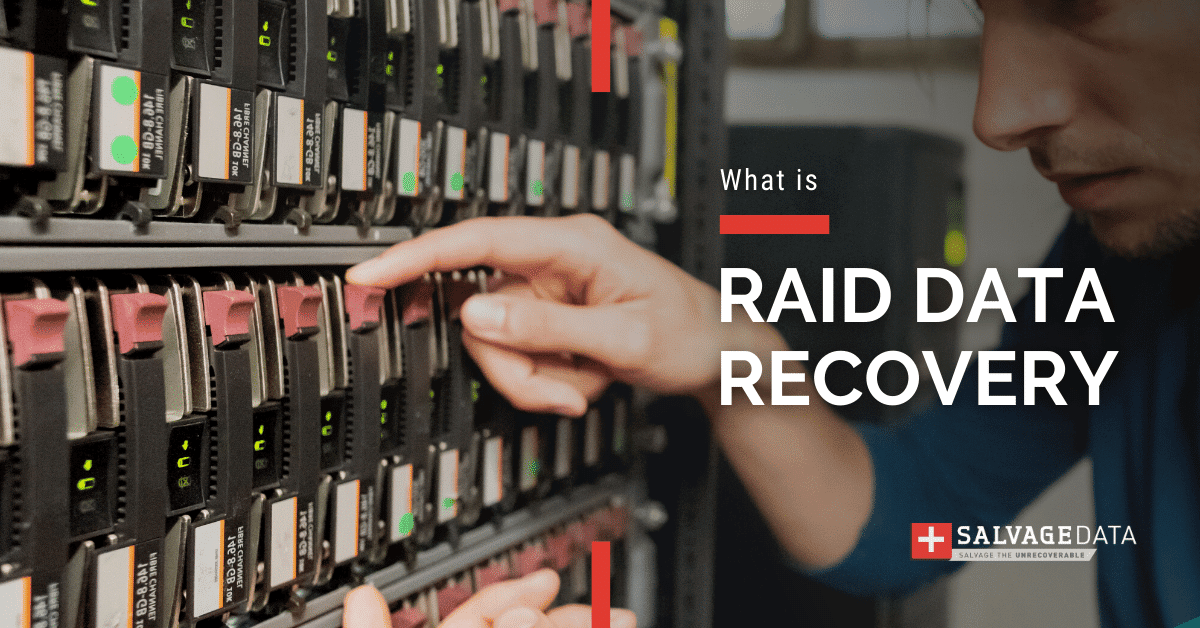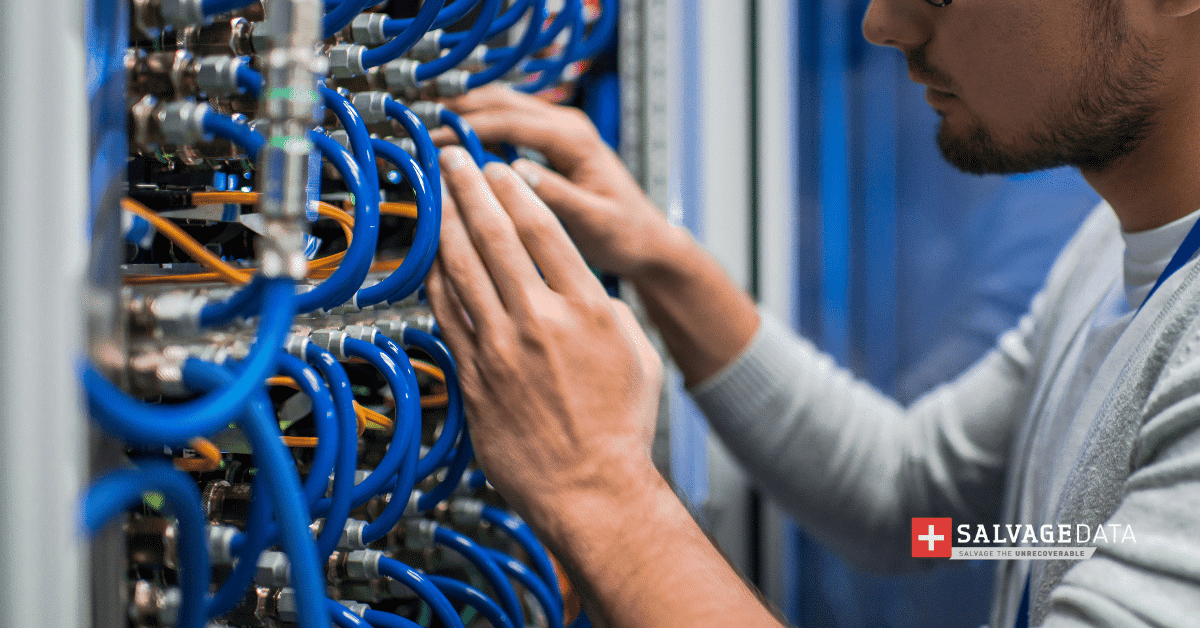Recent Articles
How To Recover Overwritten Files
The Snowflake Data Breach: A Comprehensive Overview
Mac Not Recognizing External Hard Drive: Quick Fix Solutions
How Multi-Cloud Backup Solutions Can Prevent Data Disasters
Capibara Ransomware: What is it & How to Remove
What Should a Company Do After a Data Breach: The Ticketmaster Incident
Secles Ransomware: Removal Guide
What To Do When Your Chromebook Freezes
How to Create Hyper-V Backup
What Is The Best Data Recovery Software For PC

I think there's an issue with my storage device, but I'm not sure Start a free evaluation →
I need help getting my data back right now Call now (800) 972-3282
Hardware RAID vs Software RAID: Main Differences & How To Choose
When it comes to data storage, RAID configurations are all the rage. They provide an efficient and reliable way to store large amounts of data. But with so many types of RAIDs available, it’s difficult to decide which one is right for you. In this article, we will explore the debate between hardware RAID vs software RAID and help you choose the right one for your needs.
You can implement RAID configuration in two ways:
- Using a special controller (hardware RAID)
- With an operating system driver (software RAID).
Hardware RAID vs Software RAID
Both hardware and software RAID has pros and cons, and only your need and goal can tell which is the best choice for your business.
Hardware RAID is typically more expensive but offers improved performance and a more straightforward configuration.
Software RAID is more affordable and doesn’t require a special controller, but it may have reduced performance and increased complexity.
Ultimately, the best RAID type depends on your needs and budget. But no matter which one you choose, setting up a RAID configuration can help you maximize storage capacity, amplify performance and reduce risks of data loss.
Important: make sure to always back up your company’s data. Be it on an on-site or off-site backup, tape or disk, no matter your method, as long as you make sure your data is secure. It’s also interesting to prepare a disaster recovery plan to increase your data security and business continuity.
RAID Calculator: Learn the RAID configuration requirements, redundancy, parity, and disk availability with our real-time RAID calculator.
Budget – software RAID
Budget is often the deciding factor for choosing between hardware and software RAID. Hardware RAID controllers can be expensive, while software RAID is typically much cheaper.
Capacity – hardware RAID
If you’re looking for maximum storage capacity, hardware RAID is the way to go. With hardware RAID, you can combine multiple hard drives into a single storage unit. This is especially helpful if you have a lot of data to store.
Software RAID is typically used for smaller storage needs. It’s also a good choice if you’re looking for increased flexibility. With software RAID, you can create multiple virtual drives from a single physical drive. This can be helpful if you need to store data in different locations or if you want to create a backup of your data.
Performance – hardware RAID
For performance, hardware RAID is the clear winner. Hardware RAID controllers are designed to maximize the performance of your hard drives. They can offer increased data transfer speeds and lower latency times.
System Requirements – software RAID
If you’re looking for a storage solution that is easy to set up and doesn’t require any special hardware, software RAID is the way to go. All you need is a compatible operating system and a computer with enough hard drive space.
Reliability – hardware RAID
Hardware RAID controllers are designed for reliability. They typically have built-in error checking and can recover from hardware failures.
Software RAID is not as reliable as hardware RAID. It is more susceptible to data loss if there is a power failure or if the system crashes.
Implementation – software RAID
For implementation, hardware RAID is typically more difficult. You need to install a special controller and configure the BIOS.
Software RAID is much easier to implement. All you need to do is install the software and create the virtual drives.
What is hardware RAID?
Hardware RAID is a data storage solution that uses a special controller to manage the storage of data across a group of hard drives. This controller can be built into the motherboard or added as an external device.
Hardware RAID offers several advantages over software RAID, including improved performance and more straightforward configuration.
Advantages of Hardware RAID
Better performance. Since hardware RAID uses a dedicated controller, it can provide better performance than software RAID.
More reliable. Hardware RAID is typically more reliable than software RAID since it does not rely on the operating system for proper functioning.
Easier to set up and configure. Setting up a hardware RAID is typically easier than setting up a software RAID. This is because the controller takes care of most of the work.
Disadvantages of hardware RAID
More expensive. Since hardware RAID requires an additional controller or card, it makes this technology more expensive and not affordable for all budgets or companies size.
What is software RAID?
Software RAID is a data storage solution that uses an operating system driver to manage the storage of data across a group of hard drives. Unlike hardware RAID, software RAID does not require a special controller. This makes it more affordable and easier to set up. However, it also comes with some disadvantages, such as reduced performance and increased complexity.
Advantages of Software RAID
More flexible. Since software RAID does not require a dedicated controller, it is more flexible and can be implemented on any computer with an operating system.
Easier to upgrade. Upgrading a software RAID is typically easier than upgrading a hardware RAID since you only need to update the driver instead of replacing the hardware.
Disadvantages of software RAID
Reduced performance. Since it shares the process with the operating system on the server’s motherboard, it tends to be slower. The impact on the speed is minor on RAID 0 and RAID 1 configurations.
Failed disk replacement is more complicated. Replacing a failed disk in the software RAID is more complex since you have to disconnect it from the system to make sure it stops using the disk and then replace it.
TL; DR: So, which one should you choose? The answer depends on your needs. If you are looking for the best performance, then hardware RAID is the way to go. However, if you are on a budget or don’t need the extra speed, then software RAID is a good option.
Contact SalvageData at any moment for help with your RAID data. Our experts have experience recovering RAID data from both hardware and software configuration, as well as any RAID level.













